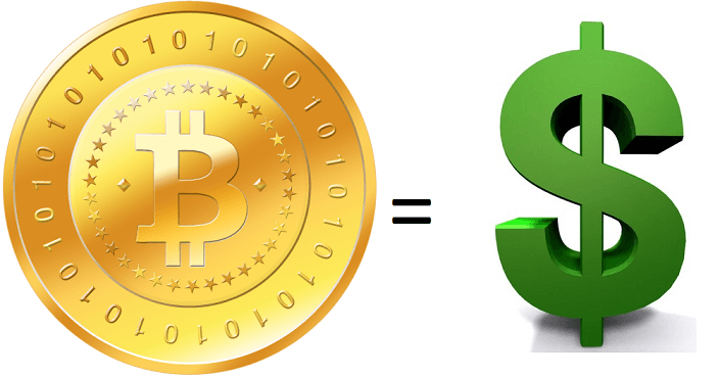As institutional investors buy the dip and regulators at last start to take interest, what exactly separates crypto from fiat?

From Bitcoin’s invention by pseudonym Satoshi Nakamoto in 2009, to the coming mass adoption of 2023, cryptocurrency has long been viewed with a mixture of fear and admiration.
Proponents argue it is the asset class for the 21st century, with MicroStrategy’s Michael Saylor arguing Bitcoin alone will one day command a $100 trillion market value.
Detractors believe crypto is little more than a Ponzi Scheme, destined for eventual collapse. Of course, despite this year’s crypto-apocalypse, shares haven’t done much better.
But while this article can’t give advice either way, it can help to lay out the investing argument in layman’s language.
What gives crypto value?
In one sense, crypto sceptics have a point. Anybody can create a cryptocurrency, and there are already more than 12,000 in circulation. But only a handful of these are serious contenders to becomes currencies, and of these, even fewer are secure or consistently upgraded.
But this is perhaps a misdirection. Taking a step back, what gives any currency value? The US Dollar, backed by the US government, is currently the world’s reserve currency. But it isn’t tied to any gold standard, any other currency, or backed by any physical asset. Instead, it holds value because consumers globally accept that it does, as they value the credibility of the US government.
Cowrie shells, cacao beans, and cattle have all been used as forms of money through history. Multiple agricultural products are still important traded commodities to this day. Yet they all have problems as currencies.
This is because all money (in general) utilises six tangible, physical assets. It must be durable, portable, divisible, fungible, scarce, and accepted by the masses. And — absolutely critical — money becomes more widely adopted the better it fulfils these criteria.

For example, gold is relatively portable in smaller amounts. It’s fungible, in that one kilogram of gold is chemically very similar to another. It’s certainly scarce enough, and expensive to get out of the ground. And it has been accepted for millennia as a form of payment, despite issues with fakes.
It is on the other hand tricky to divide. This made the old gold standard a necessary evil, where issued currency is backed by physically deposited gold at central bank locations. Eventually the gold standard was abandoned altogether, to be replaced with ‘fiat’ or currency based on faith in the issuer.
And the key argument is that cryptocurrency will one day eclipse the current fiat systems of pound, dollar, and euro, because it offers advantages across the six money-defining categories.
What makes crypto investible?
Let’s take Bitcoin, by far the most valuable and well-known cryptocurrency, as an example.
It’s more durable than fiat currency. It cannot be destroyed as long as its blockchain is maintained on even one computer. And it has gone almost ten years now without an outage. For context, the Federal Reserve money transfer system cut out for several hours in February 2021. And unlike a fiat currency, Bitcoin will not end, for example, if there’s a war or economic collapse.
It’s as portable as fiat. It can be sent anywhere with an internet connection in seconds, and unlike a bank account, a user needs only memorise their private key to access it anywhere in the world. Further, it’s usually cheaper to send internationally.
It’s divisible, as one Bitcoin consists of 100 million Satoshis, far more than is found in most fiat.
It’s fungible. One Bitcoin is identical to another. And unlike gold or fiat, it cannot be counterfeited as it runs on blockchain technology.
It’s scarce. There can only ever be 21 million Bitcoins, meaning it will ultimately be deflationary. And anyone can check the Bitcoin protocol code to confirm this limit. To change it would require the vast majority of nodes to act against their own economic self-interest.
As shown with the recent Sterling meltdown, inflationary fiat currencies can by contrast experience crisis.
The only true problem Bitcoin has is acceptability. While 180 million people use the currency, most use it as an investment rather than as a payments system. But through regulatory change and institutional investment, this is changing rapidly.
Most importantly, it has credibility as its open source, decentralised nature has stood the test of time since its inception.
Of course, various crypto programs, from Ethereum to Cardano, are trying to solve differing financial problems with varying levels of success.
The likelihood is that of the thousands currently online, a handful with develop into full blown currencies. This could help solve the acceptability problem, as more credibility becomes assigned to fewer cryptos.
For example, Bitcoin could function as a store of value, while Ethereum becomes used as a medium of exchange, and Cardano operates smart wallets.
Of course, there are no guarantees in crypto investing. Bitcoin and Ethereum could become the Yahoos of tomorrow. Detractors could also be right, and crypto itself may collapse in the coming global recession.
But the immutable advantages of crypto over fiat makes this unlikely in the long run. However, on the road to acceptability, extreme volatility will be par for the course.
And investing in crypto as a small part of one’ means accepting this high risk, in exchange for the chance of exceptional rewards.
This article has been prepared for information purposes only by Charles Archer. It does not constitute advice, and no party accepts any liability for either accuracy or for investing decisions made using the information provided.
Further, it is not intended for distribution to, or use by, any person in any country or jurisdiction where such distribution or use would be contrary to local law or regulation.
